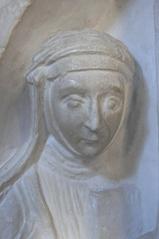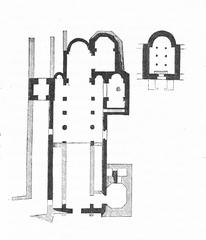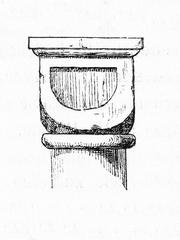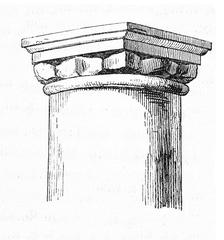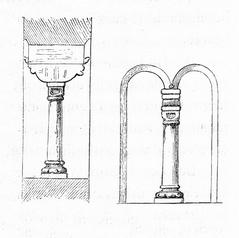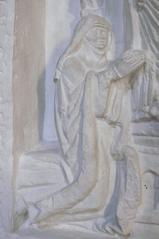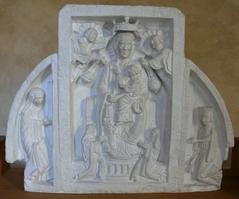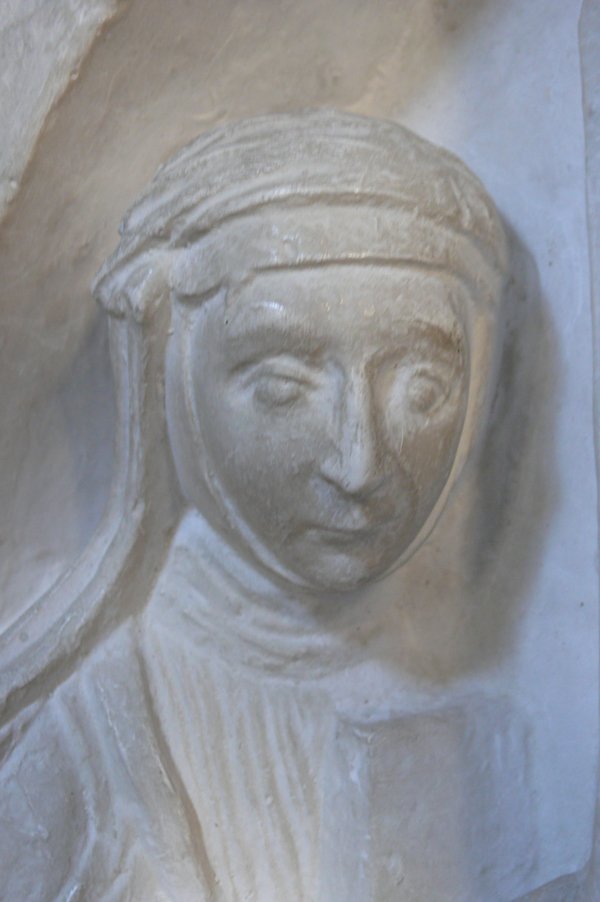
St. George’s Basilica Prague: Complete Visiting Hours, Tickets, and Historical Guide
Date: 14/06/2025
Introduction: History and Cultural Significance
St. George’s Basilica, nestled within the renowned Prague Castle complex, is one of the Czech Republic’s oldest and most architecturally significant churches. Founded in 920 CE by Prince Vratislaus I of Bohemia, this basilica is the earliest surviving church inside the Prague Castle grounds and stands as a living testament to the Romanesque style in Central Europe. Its austere, monumental core is complemented by later Gothic and Baroque modifications, creating a rich architectural dialogue that reflects over a millennium of Bohemian history.
Throughout its long history, St. George’s Basilica has played a pivotal role in the religious, political, and cultural life of the region. It was the burial place of the Přemyslid dynasty and the site of the first Benedictine convent for women in Bohemia. Today, it serves not only as a historical monument and national cultural heritage site, but also as a venue for classical concerts, exhibitions, and ongoing religious services. For the most authoritative information, consult the Prague Castle Official Website and Prague.eu.
Table of Contents
- Introduction
- Historical Overview
- Architectural and Artistic Highlights
- Visitor Information: Hours, Tickets & Accessibility
- How to Get There
- Nearby Attractions & Guided Tours
- Visitor Experience & Practical Tips
- Frequently Asked Questions (FAQ)
- Conclusion & Visitor Recommendations
- References
Historical Overview
Foundation and Early History (10th–12th Centuries)
St. George’s Basilica (Bazilika sv. Jiří) was established in 920 CE by Prince Vratislaus I, making it the oldest standing church within Prague Castle. Consecrated in 921, it became a central place for Christianization in Bohemia. The basilica’s early significance was further cemented in 973 when the first Benedictine convent for women in Bohemia was established adjacent to it, led by Mlada, sister of Duke Boleslav II. The abbess of this convent held the prestigious role of crowning the queen consort of Bohemia.
The original structure was later expanded to include a choir, tribune, and crypt, reflecting the growing influence of the Benedictine order and the basilica’s integral role in religious and ceremonial life.
Reconstructions and Architectural Evolution (12th–18th Centuries)
A catastrophic fire in 1142 resulted in extensive damage, but the subsequent reconstruction endowed the basilica with its enduring Romanesque character—thick stone walls, rounded arches, and twin towers. The north tower (“Eve”) and the taller south tower (“Adam”) are still prominent features.
Significant Gothic and Baroque elements were added over the centuries. The Gothic Chapel of St. Ludmila, housing the tomb of the sainted grandmother of St. Wenceslas, became a pilgrimage site. The striking red Baroque façade, designed by Francesco Caratti in the late 17th century, and the addition of the Baroque Chapel of St. John of Nepomuk, further enriched the basilica’s appearance (Prague.eu).
Modern Era: Restoration and Cultural Venue (19th–21st Centuries)
With the dissolution of the Benedictine convent during Emperor Joseph II’s reforms in the 18th century, the basilica suffered neglect. Restoration campaigns in the late 19th and early 20th centuries revived its Romanesque features and stabilized the structure.
In the 20th century, St. George’s Basilica was designated a National Cultural Monument and adapted as an exhibition space for the National Gallery Prague’s 19th-century Bohemian Art Collection. Its acoustics and ambiance have made it a prominent venue for classical concerts, while regular worship continues every Saturday (National Gallery Prague).
Architectural and Artistic Highlights
- Romanesque Core: Massive stone walls, barrel vaults, and a three-aisled layout, rebuilt after the 1142 fire.
- Baroque Façade: The 17th-century red-and-white front, contrasting with the austere Romanesque interior.
- Twin Towers: “Adam and Eve,” iconic features of Prague’s skyline.
- Chapels: Gothic Chapel of St. Ludmila and Baroque Chapel of St. John of Nepomuk, each richly decorated.
- Artworks & Tombs: 12th-century frescoes (including Christ in Majesty), Baroque altars, and the crypt housing Přemyslid dynasty members such as Vratislav I and St. Ludmila.
- Organ: An 18th-century organ used for concerts.
For a visual tour, explore high-resolution images and virtual tours on the Prague Castle Official Website.
Visitor Information: Hours, Tickets & Accessibility
Opening Hours
- April to October: Daily, 9:00 AM – 5:00 PM
- November to March: Daily, 9:00 AM – 4:00 PM
- Holy Mass: Saturdays at 5:00 PM (open for worshippers)
Ticket Prices
- Adults: 350 CZK
- Students/Seniors: 250 CZK
- Children under 6: Free
- Combination Tickets: Available, covering additional Prague Castle sites
Tickets can be purchased online via the official Prague Castle website, on-site ticket offices, or through city cards such as Prague CoolPass.
Accessibility
Due to its historical architecture, the basilica has limited accessibility for wheelchair users—steps and narrow passages are present, particularly in the crypt. Contact the Prague Castle information center before your visit for assistance or special accommodations.
How to Get There
- Metro: Line A, Malostranská station, followed by a 10-minute walk uphill.
- Tram: Lines 22 and 23, stop at Pražský hrad or Pohořelec.
- Walking: From Charles Bridge, a picturesque 15-minute uphill walk through the castle complex.
For more details on transport and accessibility, see Visit Prague.
Nearby Attractions & Guided Tours
While at Prague Castle, enhance your experience by exploring:
- St. Vitus Cathedral: Gothic masterpiece and resting place of Czech kings.
- Old Royal Palace: Former seat of Bohemian royalty.
- Golden Lane: Quaint, colorful historic street.
- Lobkowicz Palace: Renowned art and music collections.
Guided tours are highly recommended for deeper historical context. Audio guides are available for self-paced visits. Many tours combine St. George’s Basilica with other castle highlights (GetYourGuide).
Visitor Experience & Practical Tips
- Best Visiting Times: Early morning or late afternoon on weekdays to avoid crowds, especially during the April–October high season.
- Dress Code & Etiquette: Modest attire and respectful silence, especially during religious services. Eating and drinking are not allowed inside.
- Photography: Permitted without flash or tripods; certain areas may be restricted.
- Facilities: Restrooms and cafés are available within the castle complex. Wear comfortable shoes for cobblestone paths.
- Security: Expect airport-style security checks at castle entrances. Allow extra time during peak hours.
If you’re interested in concerts or cultural events, check the basilica’s concert schedule.
Frequently Asked Questions (FAQ)
Q: What are the opening hours of St. George’s Basilica?
A: 9:00 AM to 5:00 PM (April–October) and 9:00 AM to 4:00 PM (November–March). Holy Mass is Saturdays at 5 PM.
Q: How can I purchase tickets?
A: Online via the official Prague Castle website, at on-site offices, or with a city card.
Q: Is the basilica wheelchair accessible?
A: Main areas are partially accessible; the crypt and some chapels may be challenging. Assistance is available upon request.
Q: Are guided tours available?
A: Yes, both in-person and audio-guided tours are offered.
Q: Can I take photos inside?
A: Yes, but without flash or tripods.
Q: Are there concerts at the basilica?
A: Yes, classical music concerts are regularly held.
Conclusion & Visitor Recommendations
St. George’s Basilica is a must-see for anyone exploring Prague’s rich architectural, religious, and cultural heritage. Its fusion of Romanesque solidity and Baroque elegance, historical significance as the burial site of Bohemian royalty and saints, and vibrant modern use as a concert hall make it a multifaceted destination within Prague Castle. Plan your visit by checking opening hours, securing tickets in advance, and considering a guided tour for a comprehensive experience. Don’t miss nearby castle attractions and the opportunity to attend a concert for a truly atmospheric visit.
For up-to-date visitor information, ticketing, and exclusive audio tours, download the Audiala app. Stay connected for more travel inspiration and practical tips on Prague’s top historical sites.
References
- St. George’s Basilica - Prague Castle Official Website
- St. George’s Basilica - Prague.eu
- National Gallery Prague - St. George’s Basilica
- The Tour Guy - Prague Castle Visiting Tips
- Headout - Prague Travel Tips
- Visit Prague - St. George’s Basilica Overview
Alt tags for images: “St. George’s Basilica Prague facade featuring twin towers Adam and Eve”, “Interior of St. George’s Basilica showing Romanesque arches and crypt”, “Statue of St. George depicting martyrdom inside the basilica”.
Suggested visuals: High-resolution images of the basilica exterior and interior, map of the Prague Castle complex, and virtual tour links from official resources.
